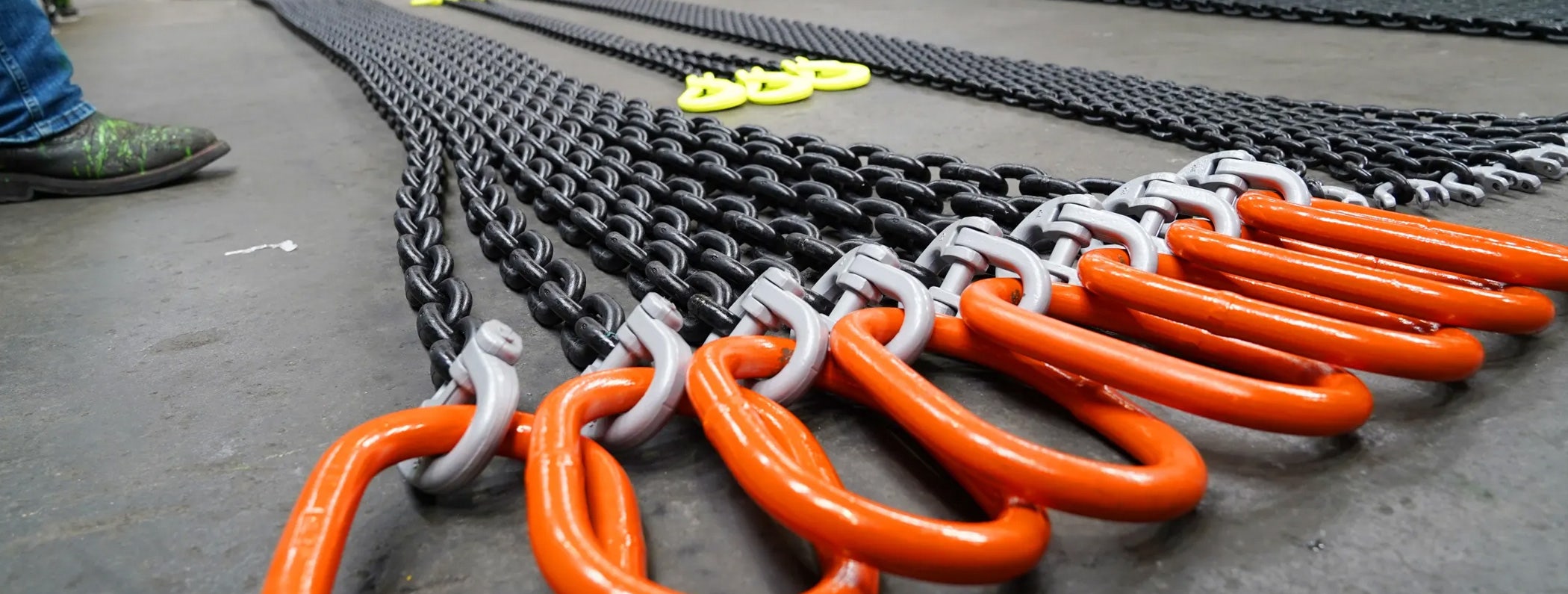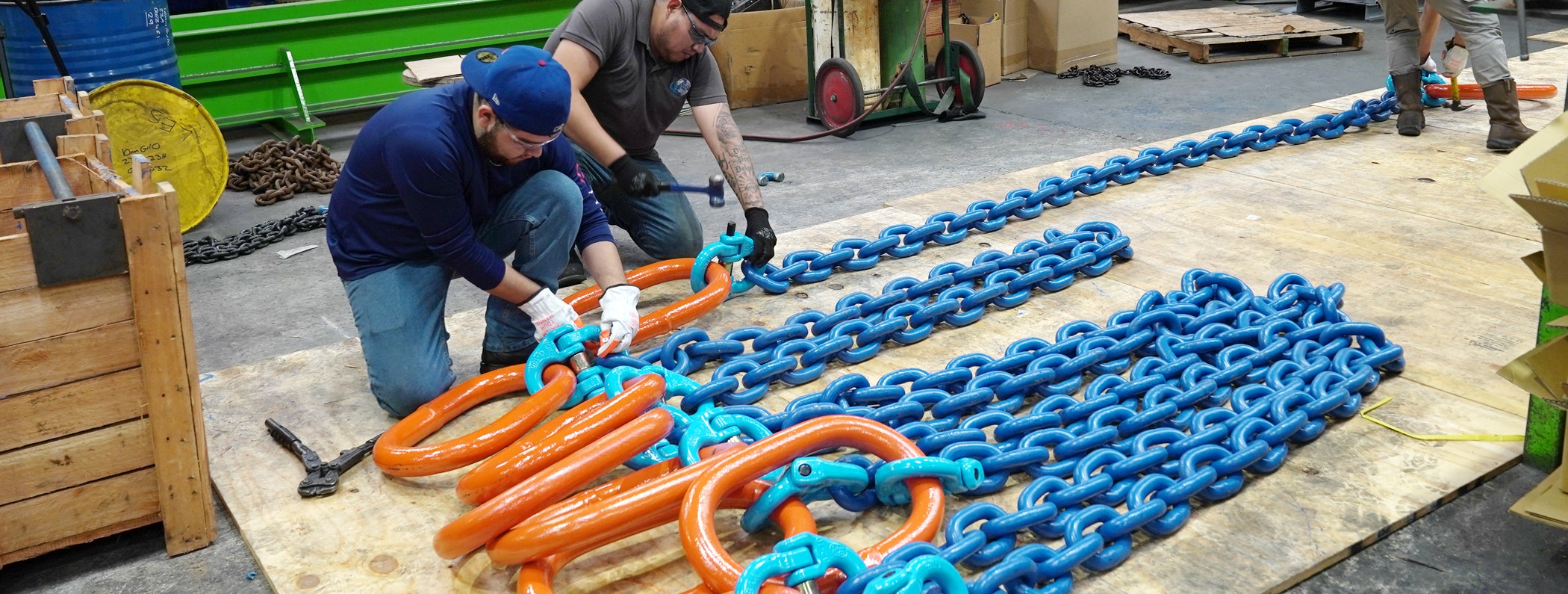How Frequently Rigging Equipment Should Be Inspected
When it comes to rigging and lifting hardware, regular equipment inspection is crucial. It comes with plenty of benefits, the most critical being workplace safety. With scheduled inspection, you can detect and prevent equipment failure that may cause extensive damage, not to mention fatal injuries. Other benefits include increased productivity and reduced maintenance and repairs.
However, like most people, you may also be wondering how frequently you should be inspecting rigging equipment.
Let’s take a look at different types of inspection processes to help you in this regard.
A. Standards Related to Equipment Inspection and Removal Criteria
There are different types of lifting and rigging equipment. So, both OSHA and ASME have published product-specific inspection and removal standards. For example, the ASME B30.26 standard covers inspection frequency and rejection criteria for rigging hardware such as shackles, adjustable hardware, compression hardware, among others. On the other hand, ASME B30.10 does the same for hooks.
You will need to go through product-specific inspection and removal criteria. But it all comes down to three basic types of inspections.
Let’s see what these are.
1. Initial Inspection
This equipment inspection is a recommended industry practice. You will need to carry out an initial inspection upon receiving the rigging hardware from your supplier or manufacturer.
It will help you verify if the rigging hardware complies with the prescribed industry standards. So, you must get this inspection done regardless of whether the equipment is new, altered, modified, or repaired.
The initial inspection includes:
- Checking the equipment for missing or illegible identification/tags
- Looking for cracks or break in the components
- Identifying equipment with excessive wear and tear
- Checking the hardware for manufacturing or modification defects
2. Daily or Frequent Inspection
In addition to the initial inspection, you will need to perform frequent inspections depending on how much you use the equipment. In most cases, inspecting rigging equipment every day is necessary.
But sometimes, you may need to inspect it before each shift. In its standard 1926.251, OSHA recommends inspecting rigging equipment before use on each shift and as necessary during its use. You can’t rely on daily inspection if you use the equipment multiple times throughout the day and for heavy-duty applications. It is one of the most common safety measures.
The process usually involves hands-on visual inception to identify defects, damages, or deformities in the rigging equipment and its components. Your inspection checklist will change depending on the type of rigging equipment. For example, when inspecting synthetic web slings, you should be looking for chemical burns, heat damage, discoloration, and damaged threading.
However, when inspecting chain slings, you will need to check for corrosion, pitting, twists, bents, and nicks. Weld splatters and arc strikes are also a sign of damaged chain slings. If you see any slings or sling components with these signs, make sure to remove them from use immediately. Also, never return repaired or modified equipment to the service unless approved by a qualified person.
The best practice is to designate a competent person for frequent lifting equipment inspection. The person can be an individual or your crew member who is considered competent as per OSHA standards.
3. Periodic Inspection
The third type of equipment inspection is periodic inspection. Both OSHA and ASME require you to inspect the rigging hardware every twelve months and document it. If the work conditions are harsher, you may need quarterly or monthly inspections.
You will need to consider the following factors to decide if you need inspection more than once a year.
- How frequently do you use the equipment?
- How harsh are the service/work conditions?
- The nature of load-handling activities/applications.
- Experience gained on the service life of the equipment used under similar circumstances.
Depending on the above factors, ASME recommends the following.
- Yearly inspection for equipment meant for everyday use.
- Monthly or quarterly inspection for equipment subject to severe service/work conditions.
- Customized inspection schedule (as recommended by a qualified person) for equipment used for special services.
If your rigging equipment gets used round the clock in extreme working conditions, you will need a customized inspection plan to ensure rigging/ lifting operation safety. Moreover, you will have to maintain a record of these periodic inspections to comply with the required OSHA/ASME standards.
B. What Type of Rigging Equipment Needs Inspection?
Rigging hardware comes in all shapes and sizes, ranging from simple, lightweight synthetic web slings to heavy-duty steel chains, shackles, hoists, and hooks. Regardless of how simple and robust a rigging component looks, you have to make sure to inspect it. Even the smallest rigging component, when left unchecked, can compromise your workplace safety.
Make sure to create a schedule for inspecting rigging equipment and stick to it. Many times, manufacturers also provide instruction manuals detailing step-by-step inspection processes. You can use these instructions or consult a qualified inspection provider to create your schedule.
C. Keep Workplace Safety Front and Center
Whether it’s a minor rigging operation or a major one, safety always comes first. Better workplace safety equates to higher employee morale and health. That, in turn, results in higher productivity. With proper safety measures in place, you could end up lifting/rigging more loads.
Plus, fewer accidents mean lower costs for unplanned replacements and repairs. Besides, the consequences of life-threatening injuries and human casualties are often far-reaching. That’s why workplace safety should be your priority. And it begins with regular inspection of all your rigging and lifting equipment.
Wrapping Up
As you can see, inspecting your rigging equipment is the first step towards budling a safer and more productive work environment. Although there are product-specific inspection and removal criteria for rigging hardware, it comes down to initial, frequent, and periodic inspections. Getting these three types of inspections right is the only way to be OSHA/ASME compliant. In this regard, make sure to understand different inspection measures in detail.
However, if you are unsure how to proceed with the inspection, consider hiring a third-party inspection provider like us. Besides selling rigging hardware, HHI also provides various testing and inspection services.
For more information, feel free to contact us today!
Get Inspection & Repair Services















